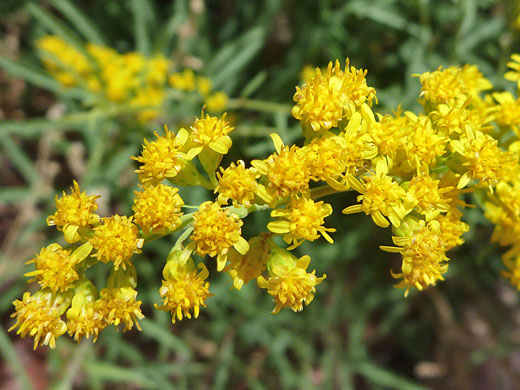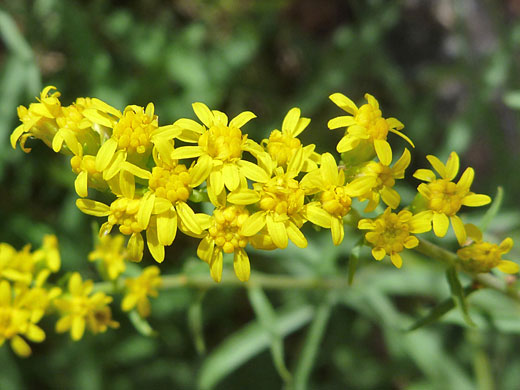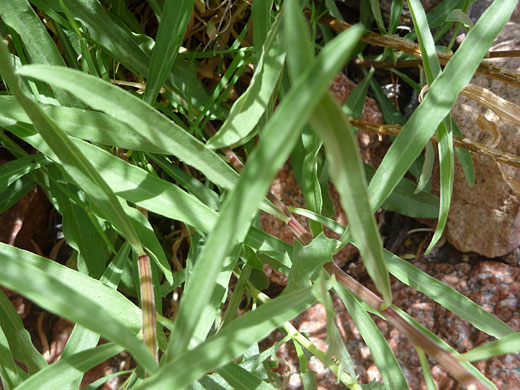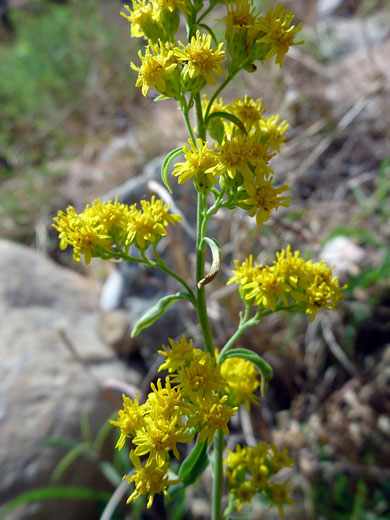Solidago Missouriensis, Missouri Goldenrod
Plants > Wildflowers > Asteraceae > Solidago Missouriensis

Flowers and upper stem leaves of solidago missouriensis, near Hance Creek, Grand Canyon National Park, Arizona
Common names:
Missouri goldenrod, prairie goldenrod
Family:
Scientific name:
Solidago missouriensis
Main flower color:
Range:
All the western states, except California
Height:
Between 10 and 30 inches
Habitat:
Varied locations; 700 to 7,000 feet or more
Leaves:
Opposite, hairless, linear to narrowly oblanceolate, usually up to 6 inches long and about half an inch wide
Season:
May to October
Solidago missouriensis is one of the most wide ranging members of this large genus, common across two thirds of the US, extending south into Mexico and north all over Canada. As expected, the plant is variable in some aspects, reflecting the many different environments it inhabits, though it has no named variants; the differences are not easily categorizable.
Leaves are long, rigid and narrow, with tiny hairs along the edges, and pointed tips, sometimes with a small spine. Bases taper to long, winged petioles. Stems are also hairless. Leaves have a midvein and (usually) two prominent, parallel side veins. They are held at right angles to the stems. Plants produce up to 50 stems, growing vertically upwards, typically to a height of 2 feet.
The inflorescence is a paniculiform array - an elongated, branched cluster, containing from 20 to over 200 flowerheads, arranged on alternate, closely-spaced side-stalks which often arch downwards. Flowerheads have 3 to 4 rows of small green phyllaries, 5 to 14 yellow ray florets and 8 to 20 yellow disc florets.
Leaves are long, rigid and narrow, with tiny hairs along the edges, and pointed tips, sometimes with a small spine. Bases taper to long, winged petioles. Stems are also hairless. Leaves have a midvein and (usually) two prominent, parallel side veins. They are held at right angles to the stems. Plants produce up to 50 stems, growing vertically upwards, typically to a height of 2 feet.
The inflorescence is a paniculiform array - an elongated, branched cluster, containing from 20 to over 200 flowerheads, arranged on alternate, closely-spaced side-stalks which often arch downwards. Flowerheads have 3 to 4 rows of small green phyllaries, 5 to 14 yellow ray florets and 8 to 20 yellow disc florets.
All Contents © Copyright The American Southwest | Comments and Questions | Contribute | Site Map




